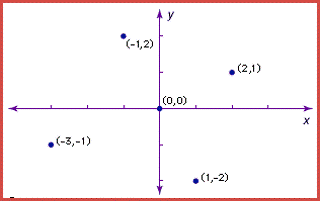INVENTION
INVENTION

Descartes developed the concept of Cartesian-coordinates while stationed in Germany during the Thirty Years’s war.
The story goes that Descartes was lying on the bed and was observing a fly on the ceiling. He began to wonder how he can locate the fly’s position. He needed two measurements– fly’s distance from the wall and its distance from the window.
He generalized this idea to determine the position of any point in a plane using two numbers, which we now call the Cartesian-coordinates.
“Any problem in geometry can be easily reduced to such terms that a knowledge of the lengths of certain lines is sufficient for its construction”
~ First Line from Rene Descartes’ La Géométrie,1637, tr. D.E. Smith and M.L. Latham, New York: Dover, 1954

(Cartesian coordinate plane, Encyclopedia Britannica)

Proverbial fly which inspired Descartes (The Fly on the Ceiling book by Dr Julie Glass)
On Descartes' Geometrie (Excerpt from my interview with Dr. Richard Edwards PHD, Lyman Briggs College, March 2024)
Importance of Cartesian Geometry (Excerpt from my interview with Dr. Amy Shell-Gellasch PHD, Author, March 2024)
With Cartesian-coordinates, Descartes brilliantly merged algebraic equations into geometric shapes. This was a pivotal turning point in history as Descartes freed mathematics from the need to construct cumbersome geometric diagrams and shapes and instead used algebraic procedures. This groundbreaking invention was published in ‘La Géométrie’ in 1637.
This breakthrough laid the groundwork for modern calculus and provided a powerful tool for solving geometric problems using algebra.
Descartes’ Analytical Geometry (The Story of Maths by Marcus Du Satoy, University of Oxford, BBC television series, October 2008)
Counter-Argument
Descartes' original intent for coordinate system differed from its modern interpretation, lacking consideration for real-world applications.
“Descartes did not lay down a coordinate frame to locate points as a surveyor or a geographer might do, nor were his coordinates thought of as number pairs. The coordinates of Oresme, which influenced Galileo, are closer , both in motive and in appearance to the modern point of view than of Descartes”
~ A History of Mathematics, Uta Merzbach and Carl Boyer, 1968
However, the times he lived in shaped his writing style where he intentionally omitted certain aspects. Nevertheless, his idea evolved into a powerful mathematical tool, recognized, and expanded upon by subsequent mathematicians.
“I hope that posterity will judge me kindly, not only as to the things which I have explained, but also to those which I have intentionally omitted to leave to others the pleasure of discovery”
~ Rene Descartes’ La Géométrie,1637, tr. D.E. Smith and M.L. Latham, New York: Dover, 1954 Dover, 1954
